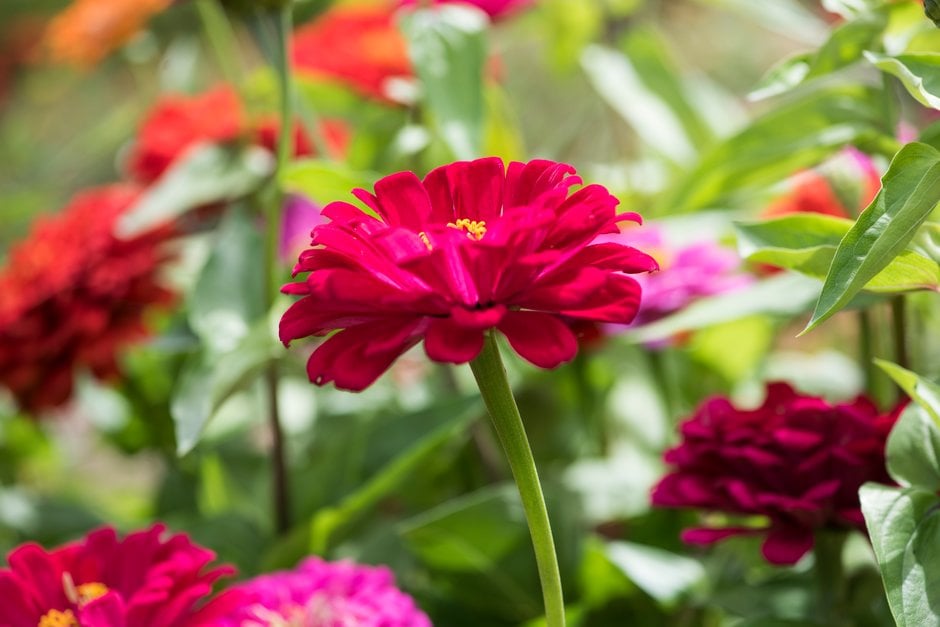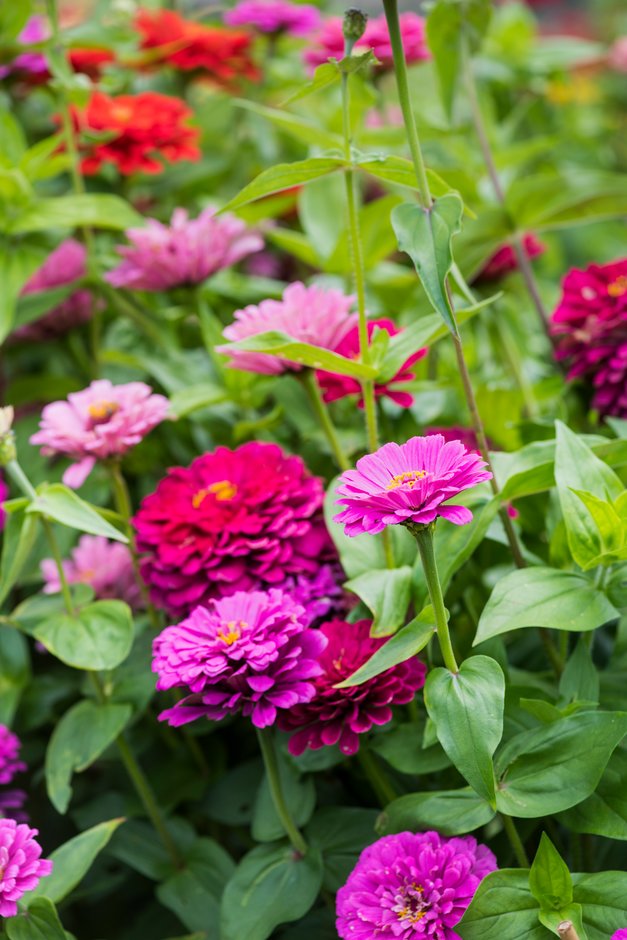Not the plant you're looking for? Search over 300,000 plants
Annual Biennial
Size
Ultimate height
0.5–1 metresTime to ultimate height
1 yearUltimate spread
0.1–0.5 metresGrowing conditions
Chalk
Clay
Loam
Sand
Moisture
Moist but well–drained, Well–drainedpH
Acid, Alkaline, NeutralColour & scent
| Stem | Flower | Foliage | Fruit | |
| Spring | Green | |||
|---|---|---|---|---|
| Summer | Orange Pink Red White Yellow | Green | ||
| Autumn | Orange Pink Red White Yellow | Green | ||
| Winter |
Position
- Full sun
Aspect
South–facing or West–facing
Exposure
Sheltered Hardiness
H2Botanical details
- Family
- Asteraceae
- Native to GB / Ireland
- No
- Foliage
- Deciduous
- Habit
- Bushy
- Genus
Zinnia can be annuals, perennials or sub-shrubs, with branching stems bearing opposite leaves and solitary terminal flower-heads in summer
- Name status
Trade
How to grow
Cultivation
Grow in well-drained, fertile, humus-rich soil in a warm, sunny, open position
Propagation
Propagate by seed sown in pots in spring or, in warm areas, sown in situ in late spring
Suggested planting locations and garden types
- Cottage and informal garden
- Cut flowers
- Flower borders and beds
Pruning
Deadhead to prolong flowering
Pests
Generally pest-free
Diseases
May be subject to grey moulds, powdery mildews and a leaf spot
Love gardening
Sign up to receive regular gardening tips, inspiration, offers and more
View our Privacy Policy
Get involved
The Royal Horticultural Society is the UK’s leading gardening charity. We aim to enrich everyone’s life through plants, and make the UK a greener and more beautiful place.

